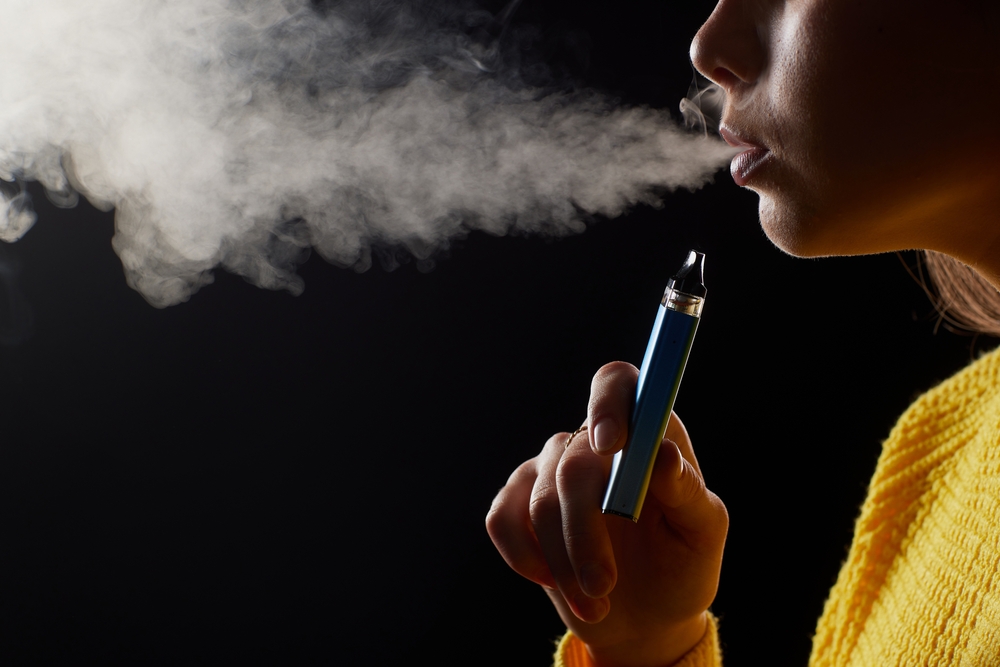
It started as an ordinary workday in the Texas heat. A quick break, a few moments of quiet in his truck, and a puff from his vape something he did hundreds of times a day without a second thought. Within minutes, 23-year-old Hudson Williams felt a pain so sharp it stole his breath away. What began as what he thought was heartburn quickly became agony that radiated through his chest, neck, and shoulders.
Before long, he was in the hospital, his lung partially collapsed. He was told he had narrowly avoided a far worse outcome. The habit he thought was safer than smoking had almost taken his life.
Hudson’s story is not an anomaly. It represents a disturbing trend that continues to grow among young people who see vaping as the modern, “cleaner” alternative to cigarettes. Behind the flavored vapor lies a potent mix of chemicals and addictive substances that can devastate the lungs, heart, and brain.
A “Healthier” Choice That Wasn’t
Like many in his generation, Hudson turned to vaping because it seemed like the lesser of two evils. Cigarettes had long been associated with lung cancer, yellow teeth, and that stale smell that clings to everything. Vaping, by contrast, looked futuristic and harmless. It produced no smoke, just sweet-smelling clouds that dissolved into the air.
When he made the switch in 2019, Hudson told himself he was being responsible. The devices were sleek, the flavors appealing from strawberry milk to minty menthol and every advertisement suggested that vapes were designed to help smokers quit. But what no one told him was that vaping could actually deliver more nicotine, more frequently, than cigarettes ever could.
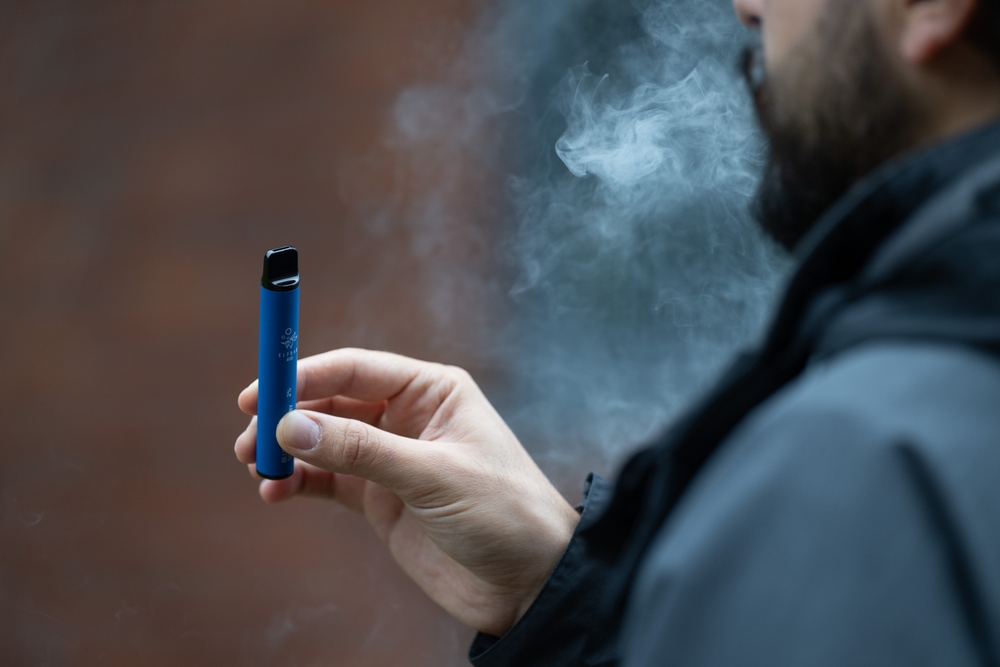
Within months, he was hooked. What started as an occasional puff became an unconscious reflex. He found himself reaching for his vape every few seconds, even while working on the factory floor. It wasn’t long before he was inhaling almost constantly, unaware of the toll it was taking inside his chest.
“I thought I was doing something better for myself,” Hudson later said. “It tasted better, it smelled better, and everyone I knew was doing it. I never thought it could actually destroy my lungs.”
The Day Everything Changed

On a late August afternoon, Hudson’s daily routine came to a brutal halt. As he sat in his truck between shifts, he felt a pressure in his chest that quickly intensified into stabbing pain. The discomfort spread across his upper body his collarbone, his rotator cuff, even his ear. It became so unbearable that he could barely breathe.
“I thought I was having a heart attack,” he said. “Within fifteen minutes, I couldn’t take a full breath.”
A coworker rushed him to the nearest hospital. There, doctors discovered that his lung had partially collapsed, a condition known as pneumothorax. The medical team explained that air had leaked from his lung into the space between it and his chest wall, preventing it from expanding properly. In Hudson’s case, the collapse was about ten percent not enough to kill him, but enough to change his life.
Doctors told him something that left him stunned: there was a one hundred percent chance that his vaping habit had caused it.
What Happens When the Lung Gives Out
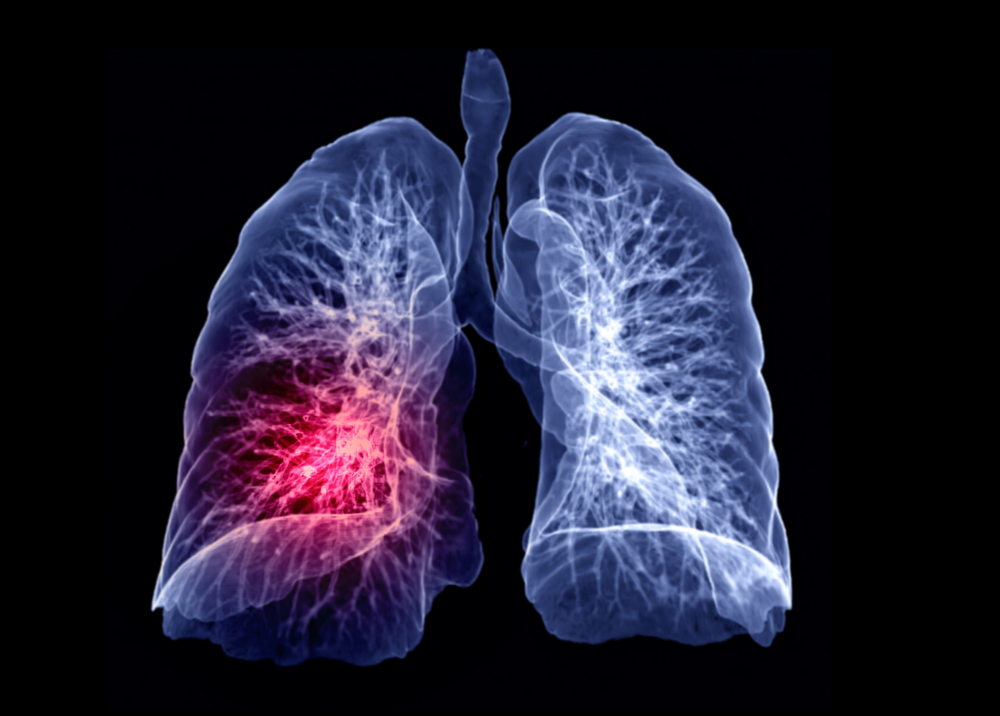
A collapsed lung sounds like something that happens only to divers or trauma victims, but doctors are increasingly linking it to vaping. The vapor inhaled from e-cigarettes can damage the fragile tissue of the lungs, leading to inflammation and the formation of tiny air-filled sacs called blebs. When one of these blebs bursts, air escapes and causes the lung to deflate.
Hudson’s doctors explained that the years of constant vaping had likely weakened his lungs to the point that even a normal breath could trigger a rupture. He was lucky a full collapse can be fatal, and in some cases, both lungs give out at once.
He spent the night under observation, hooked up to oxygen and monitors. Each breath came with pain. When the doctors told him that the damage might never fully heal, the reality sank in. Even if he stopped vaping, they warned, it could happen again.
“I quit that day,” Hudson said. “It was one hundred percent the wake-up call I needed.”
The Rise of a Hidden Epidemic
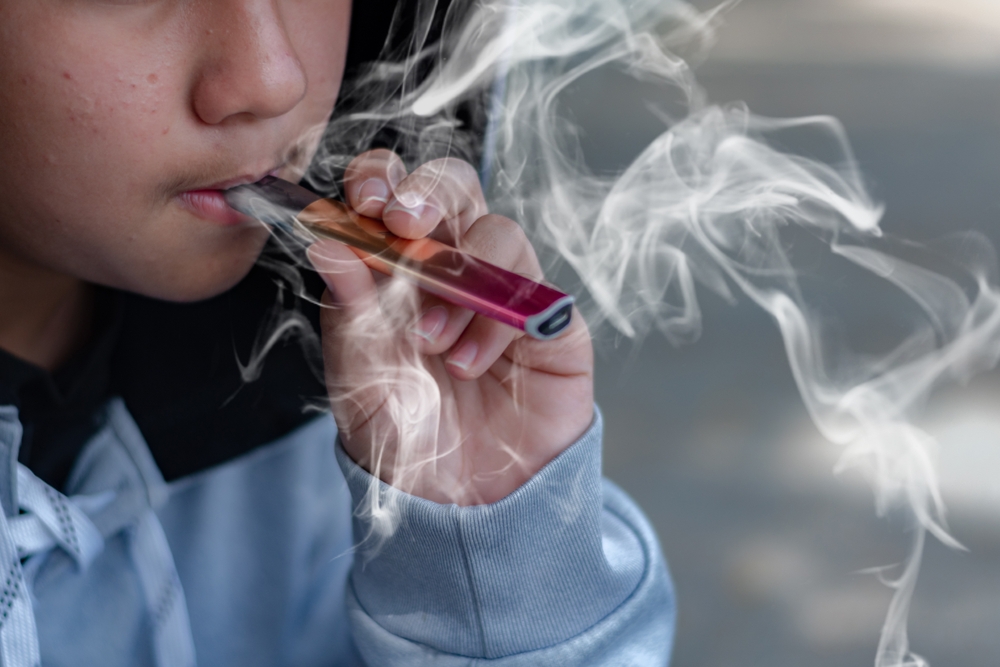
Hudson’s story echoes a growing number of cases reported across the United States and beyond. The Centers for Disease Control and Prevention (CDC) first identified vaping-related lung injuries as a public health crisis in 2019. The condition, known as EVALI (E-cigarette or Vaping Product Use-Associated Lung Injury), hospitalized thousands and caused at least 68 deaths that year alone.
Many of the victims were under 30, often young and otherwise healthy. In nearly every case, the culprit was the same: chemicals in vape aerosols that the lungs are not equipped to handle. While cigarette smoke takes decades to cause chronic disease, EVALI can strike suddenly, sometimes within days or weeks of exposure.
One 23-year-old man from the Midwest experienced a similar ordeal. What began as flu-like symptoms spiraled into respiratory failure, forcing doctors to place him on a ventilator. Tests revealed no infection, no underlying disease just severe lung injury caused by vaping THC products that contained vitamin E acetate, a thickening agent that coats the lungs in oil.
The lungs, designed to absorb oxygen, cannot process oils or synthetic compounds in the same way. Instead of healing, the tissue inflames and scars, reducing the lungs’ ability to exchange gases. Patients suffocate from within, as their own immune system turns against them.
The Chemistry of Addiction

Vaping is not just a physical threat; it’s a neurological trap. Most vape liquids contain nicotine, an addictive compound that floods the brain with dopamine, creating feelings of relaxation and reward. Because e-cigarettes can deliver nicotine in smoother, more concentrated doses than cigarettes, dependence can form faster and more intensely.
Hudson’s habit a puff every ten seconds was not unusual among heavy users. Studies have shown that vape users may absorb as much or more nicotine than traditional smokers. For young people whose brains are still developing, the effects can be even more profound. Nicotine disrupts brain circuits involved in attention, learning, and impulse control, cementing addiction before users even realize what’s happening.
For Hudson, the compulsion was almost automatic. He described his vape as an extension of his hand, something he reached for without thinking. “It was constant,” he said. “I couldn’t go five minutes without it. I thought I was fine, but my body was falling apart.”
The Misleading Promise of Safety
Vaping began as a tool for harm reduction, marketed as a way for smokers to quit cigarettes. Some public health experts acknowledge that under controlled circumstances, certain vaping products might help reduce tobacco-related deaths. But this potential benefit has been overshadowed by widespread misuse and misinformation.
Companies have capitalized on youth culture, offering colorful devices and flavors like cotton candy or mango ice that mask the harshness of nicotine. The sleek design and easy access have turned vaping into a lifestyle rather than a cessation tool. According to CDC data, about six percent of American adults vape regularly, but among those aged 18 to 24, the rate is more than double.
The consequence is a generation hooked on nicotine through products they were told were safe. Many of them, like Hudson, never smoked cigarettes at all before picking up a vape.
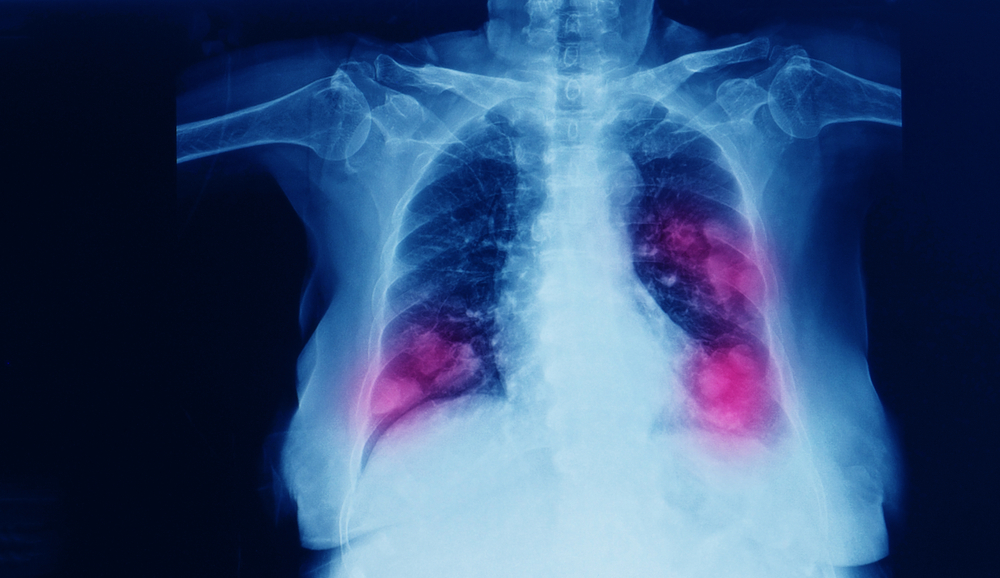
The Science of Damage
E-cigarette vapor is often described as “just water vapor,” but that could not be further from the truth. When heated, vape liquids release an aerosol containing thousands of chemicals, including formaldehyde, acetaldehyde, and acrolein substances known to cause cellular damage. In THC vapes, additional compounds like vitamin E acetate have been linked to direct injury in the alveoli, the tiny air sacs responsible for gas exchange.
Once inside the lungs, these chemicals trigger inflammation. White blood cells rush to the area, releasing enzymes that break down tissue. Instead of healing, the lungs scar, reducing elasticity and oxygen capacity. In severe cases, as with EVALI, the alveoli fill with fluid, effectively drowning the patient from the inside.
Even for those who recover, the long-term effects remain uncertain. Some patients show persistent lung scarring months after hospitalization. Others experience decreased stamina, shortness of breath, or chronic coughing long after quitting.

A Culture of Denial
One of the reasons vaping has become so entrenched among young adults is the culture surrounding it. On social media, influencers blow perfect smoke rings and perform vape tricks to millions of followers. The aesthetic has glamorized the habit, normalizing addiction behind filters and music.
Hudson admits that he saw warnings online but ignored them. “It hadn’t happened to anyone I knew,” he said. “So I thought it didn’t matter.” That false sense of security is part of what makes vaping so dangerous. The risks are invisible until they’re not.
Doctors across the country have echoed the same warning: vaping is not harmless. In some cases, it can be worse than cigarettes. Dr. Anne Schuchat, a senior official at the CDC during the EVALI outbreak, noted that the chemical diversity of vaping products makes their effects unpredictable. “The problem,” she said, “is that users have no idea what they’re inhaling.”
Learning to Quit

Quitting vaping is not easy, but it is possible. The first step is understanding that the cravings are temporary, not eternal. Experts recommend setting a quit date and replacing the habit with healthier alternatives, such as chewing sugar-free gum, exercising, or practicing mindfulness.
Nicotine replacement therapies like patches, lozenges, or prescription medications can also help reduce withdrawal symptoms. More importantly, support from friends, family, and healthcare providers greatly increases the chances of success.
Hudson’s recovery has been slow but steady. He quit vaping immediately after his hospital visit and has since become vocal about the dangers of e-cigarettes. “It’s not cool,” he said simply. “It’s hard to quit, but it’s harder to live with the damage.”
A Broader Warning
Hudson’s story, like many others, reveals a truth that marketing often hides. Vaping may look cleaner, taste better, and seem more modern than smoking, but the risks are real. Behind the clouds of sweet vapor are chemicals that can scar lungs, alter brain chemistry, and even end lives.
Public health agencies continue to study vaping’s long-term effects, but one fact is already certain: lungs are not meant to inhale aerosolized chemicals. The 2019 EVALI outbreak may have faded from headlines, but new cases continue to appear in hospitals every year.
For Hudson, the experience has left both a physical and emotional scar. He still feels occasional tightness in his chest and remains wary that another collapse could occur. Yet he considers himself lucky. Many others never get that second chance.
“I definitely regretted that I’d ever started,” he said. “If my story makes even one person quit, it’s worth telling.”
The Real Cost of Vapor
Vaping began as an innovation, a technological promise of a safer future. Instead, it has become a cautionary tale of how easily health can be traded for convenience. The slick devices and fruity flavors hide a truth that doctors now repeat with urgency: there is no safe way to inhale chemicals into the lungs.
Hudson’s near-death experience stands as a stark reminder. What he thought was a harmless habit nearly silenced his breath forever. His warning, shared online and through interviews, has resonated with thousands.
“I never thought it would happen to me,” he said, echoing the disbelief of so many others who find themselves in hospital beds because of vaping. “But it did.”
The next time someone says vaping is safe, think of the young man gasping for air in a Texas hospital room. Think of the lungs built for oxygen, not vapor. And remember that every inhale carries a choice one that could determine whether you ever take the next one.
Loading...

